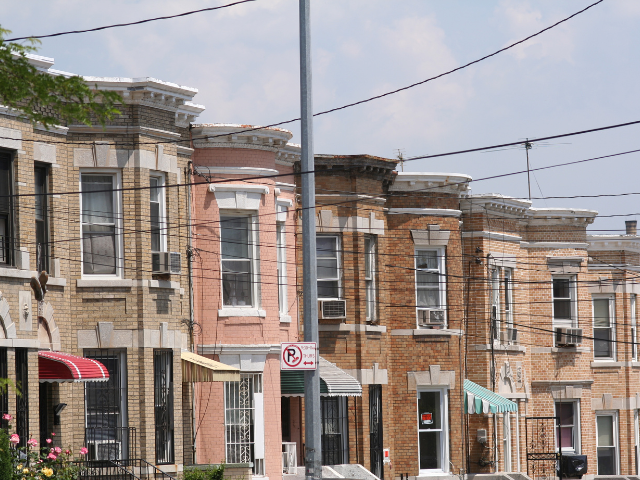Ensuring the safety of children and families from lead is crucial for their growth and development, as well as maintaining good health throughout their lives. Schenectady County is dedicated to ensuring all families and children have a lead-safe home.
Childhood Lead Poisoning Prevention Program (CLPPP+)
The City of Schenectady provides lead remediation grants to eligible City of Schenectady property owners who own pre-1978 housing units that contain lead hazards.
What is Lead?
Lead is a natural metal that is commonly found in our environement. Lead can be found in the air, the soil, the water, and even inside our homes and businesses. Lead can be toxic and cause health problems in humans and animals.
Lead is durable and was widely used in building materials and products before we learned about the health effects of lead exposure. Lead may be found in:
Where else can I find Lead?
Lead can also be found in cigarettes, ashes, some printed materials, and some cultural cosmetics and home remendies like Kohl and Surma. Food from other countries and silver or gold plated jewelry could also contain lead. Lead in paint is banned for use in residential homes, but is still used commercially on outdoor bridges.
- When children are exposed to lead, they absorb it into their blood and bones, and this can cause lead poisoning.
- Children are more likely than adults to get lead poisoning, and to experience health effects from being poisoned because they are still growing.
- ANY amount of lead in the body is bad and can hurt your child. There is no “safe” level of lead for the body.
- Risk of Lead Poisoning for Children
- Eating pieces of peeling paint (it tastes sweet to children!)
- Breathing in paint dust
- Playing in dirt outside a home
- Using cultural cosmetics and home remedies like Kohl and Surma
- Hyperactivity
- Clumsiness, stumbling, staggering
- Developmental Delays
- Lethargy
- Irritability
- Seizures
- Poor Appetite
- Abdominal Pain
- Constipation
- Vomiting
- Behavioral problems, including acting out and ADHD
- Learning disabilities, including a decrease in IQ
- Anemia
- Kidney problems
- Prenatal problems for both the mother and the growing fetus
Why should I care about lead in my home?
Schenectady County’s Lead Poisoning Prevention Program
Schenectady County’s Lead Poisoning Prevention Program provides care coordination and environmental follow-up to families and children who may have an elevated lead level or live in a home with potential lead hazards. Priority is given to residents within the zip codes of 12303, 12304, 12305, 12306, 12307, 12308, or 12309. Schenectady County is also working with the City of Schenectady on the Schenectady Lead Safe Housing Program, to provide grant funds to homeowners and landlords to remove lead hazards from qualifying homes within the City of Schenectady.
Lead can cause health problems in children with developing brains. A blood test can determine how much lead is in a child’s body. New York State requires doctors to test all children for lead poisoning at ages 1 and 2. At your child’s regular wellness check the doctor will screen your child for lead poisoning using a fingerstick blood test. If the fingerstick is 5 ug/dl (micrograms per deciliter) or higher the child must have a blood sample taken from the vein to confirm if the child has lead poisoning. To learn more about what the various lead levels mean: What Your Child's Blood Lead Test Means
Steps Parents and Guardians Can Take to Prevent Lead Poisoning
- Keep children away from peeling paint and broken plaster.
- Damp mop and wipe floors and windows areas at least weekly.
- Wash children’s hands after play, before meals, and before bed to rinse off any lead dust or dirt.
- Feed your child a healthy diet, with foods high in iron, calcium and Vitamin C.
- Wash your child’s toys often, especially teething toys.
- Use cold water for infant formula or cooking. Let the cold-water tap run for at least a minute before using to flush any lead residual from the pipes.
- Store food from open cans in glass or plastic containers.
- Use lead-free dishes. Some dishes may have lead in their glazes. Don’t use chipped or cracked dishes to store or serve food. Be careful with your hobbies. Some crafts call for use of paints, glazes and solder. Many of these may contain lead.
- Don’t bring lead home with you from work. People who work at construction, plumbing, painting, auto repair and certain other jobs can be exposed to lead.
- Keep children away from remodeling and renovation sites. Avoid having children play in soil especially around the foundations of older buildings and near roadways.
Schenectady County provides:
- FREE Lead Inspections
- FREE Lead Training to learn how to remove lead hazards safely
- Cleaning products and HEPA Vacuum rentals
- Assistance with applying for the Lead Safe Housing Program- Provides up to $20,000 for window, door, siding replacement or other fixes for eligible properties
As a renter, it is your right to know if your home contains lead that could be hazardous to the health of your home.
If the landlord is aware of any lead in the home, they are required to tell new tenants about the lead hazards before leasing the property. Landlords must provide tenants with Environmental Protection Agency’s (EPA) pamphlet on Protect Your Family From Lead in Your Home, if there is known lead in the home. Not all landlords are aware the home they are renting has lead. Schenectady County can offer inspections to residents living in the following zip codes: 12303, 12304, 12307, or 12308 if landlords are unsure.
If a lead hazard is found, the landlord is required to fix it at no cost to the tenant. For repairs that are smaller than a 6 square foot space, landlords should contact Schenectady County Public Health Services to discuss the plan for remediation at 518-386-2818.
If a job is larger than a 6 square foot space:
As of April 2010, the EPA requires anyone doing renovation, repair, and painting projects that disturb lead-based paint in homes built before 1978 to be legally EPA-certified and follow Renovation, Repair and Painting (RRP) practices to prevent lead contamination. If you are going to do the work yourself, at least one member of your staff must be trained and certified in RRP practices.
If you are having problems with your landlord, the following resources may be able to assist:
The Legal Aid Society of Northeastern New York
- 518-462-6765
- https://www.lasnny.org/
Schenectady Community Action Program (SCAP)
- 518-374-9181
- https://scapny.org
Click here for the Tenant Education and Consent Document
Schenectady County provides:
- FREE Lead Inspections
- FREE Lead Training to learn how to remove lead hazards safely
- Cleaning products and HEPA Vacuum rentals
- Assistance with applying for the Lead Safe Housing Program- Provides up to $20,000 for window, door, siding replacement or other fixes for eligible properties
Homeowners and landlords are required to provide a safe environment for the families who live in the houses they own, including keeping families safe from exposures to lead through the home. If the home you own was built before 1978, it probably contains lead paint. If a child or pregnant woman is poisoned by lead while living in your home, you may be liable.
What are my responsibilities as a landlord?
Disclosure of lead-based paint to tenants:
- If you know there is lead paint in your home, you are required to disclose this information to anyone interested in renting your property, before a rental agreement or lease is signed.
- You must provide an Environmental Protection Agency (EPA) lead hazard information packet to the tenants including this handout from the EPA to tenants Protect Your Family From Lead in Your Home
- If you do not disclose lead, and a child living in the home is poisoned by lead, you may be liable to pay damages to the child’s family.
Fix the lead hazard:
- Landlords are required to fix and remediate any lead-hazards in the home so that the home is safe for children and families.
- Some jobs are small and will be easy for you to do yourself, but any job that will disturb 6-square feet or more of paint requires an EPA-certified contractor to fix the lead-hazards.
- If a known lead-hazard is not fixed and a child is poisoned, the homeowner may be liable!
Homeowners and landlords who have lead hazards that need repair may qualify to participate in the Schenectady County Lead Safe Housing Program.
Click here for Landlord information
Schenectady County provides:
- FREE Lead Inspections
- FREE Lead Training to learn how to remove lead hazards safely
- Cleaning products and HEPA Vacuum rentals
- Assistance with applying for the Lead Safe Housing Program- Provides up to $20,000 for window, door, siding replacement or other fixes for eligible properties
As of April 2010, The Environmental Protection Agency (EPA) requires anyone doing renovation, repair, and painting projects that disturb lead-based paint in homes built before 1978 to be legally EPA-certified and follow Renovation, Repair and Painting (RRP) practices to prevent lead contamination.
Need to find an EPA certified contractor to fix the lead-hazards in your home?
Locate Certified Renovation and Lead Dust Sampling Technician Firms
Information for contractors that are interested in becoming EPA certified in RRP practices:
Schenectady County requires Renovators and Contractors to complete an EPA training course to be considered an EPA Certified lead safe contractor.
Renovation, Repair and Painting (RRP) course: Initial 8 hour course
After successful completion of these courses, participants are certified by the EPA for 5 years.
Local training offered:
Free training for local contractors to become EPA-certified in RRP practices is offered by Cornell Cooperative Extension of Albany. Participants must pre-register for these trainings.
Information for contractors that are already EPA certified in RRP practices:
A Refresher course needs to be completed every 5 years to keep your certification. See “Local training offered” above for a schedule of upcoming, free, refresher courses.
Additional EPA Resources:
Schenectady County provides:
- FREE Lead Inspections
- FREE Lead Training to learn how to remove lead hazards safely
- Cleaning products and HEPA Vacuum rentals
- Assistance with applying for the Lead Safe Housing Program- Provides up to $20,000 for window, door, siding replacement or other fixes for eligible properties
The City of Schenectady was awarded Lead-Based Paint Hazard Control Funds by the U.S. Department of Housing and Urban Development (HUD). The City of Schenectady will provide lead hazard control funding, up to $20,000 per unit, to eligible City of Schenectady property owners who own pre-1978 housing units that contain lead hazards.
The primary housing objectives are to incorporate Lead Hazard Control and Energy Efficiency measures into 205 City of Schenectady housing units, occupied by low-income tenants with young children (<6 years old). All lead hazard control work will be conducted by the Schenectady Lead Safe Housing Program’s (SLSHP’s) pre-approved pool of Environmental Protection Agency (EPA) Certified Lead Abatement Firms.
Owners who are approved for funding are required to cover all additional Lead Hazard Control costs if they exceed the $12,000/unit subsidy. Only components (windows, siding, doors, walls, ceilings, floors) that contain lead hazards may be addressed with this funding.
Click here to learn more about eligibility requirements and how to apply.







.png)
